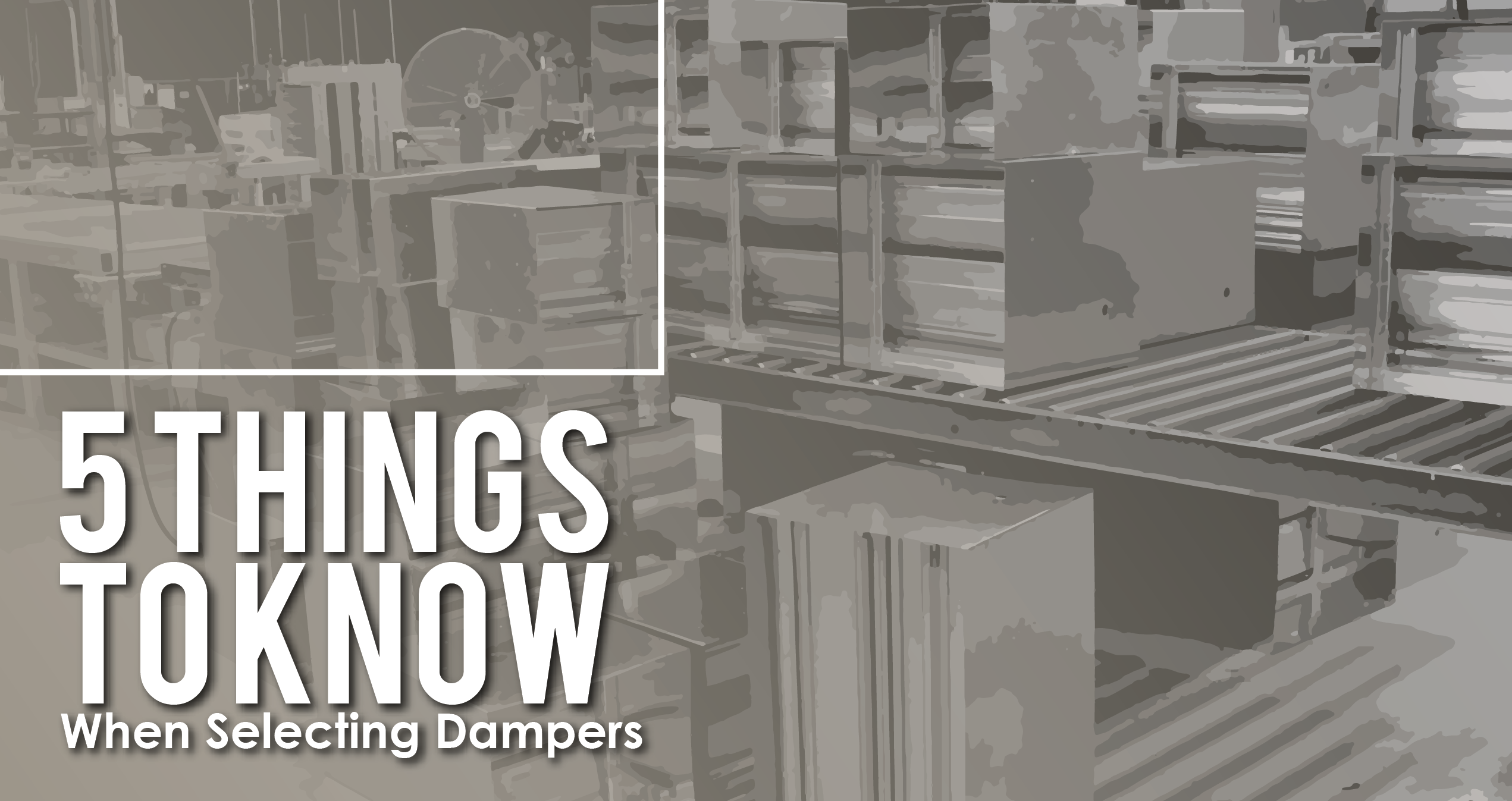Damper selection requires more than a keen eye. You need to understand what you're looking for. Here are five things to know when selecting dampers.
Starting a new project and need HVAC equipment? Chances are you’re going to need dampers to control airflow and balance air pressure. Finding the right dampers isn’t a simple task. There are several types of air control dampers out there, and each type will serve a particular function.
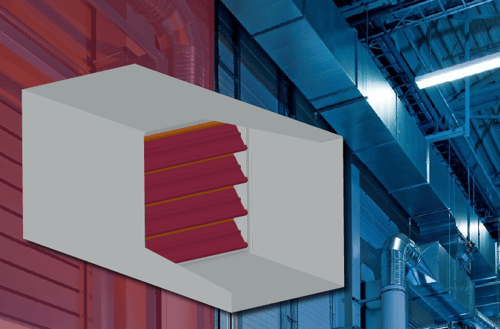
Some dampers may perform a similar role, but in specific ways. Other damper types will be specific to the type of duct. Each damper type will work best with the right application. The wrong damper will drag down your HVAC system and even put unnecessary strain on components, like system fans. You will need to know a few things about dampers to make the right choice. Start by understanding what each damper will do in your system.
1 - Know the Application
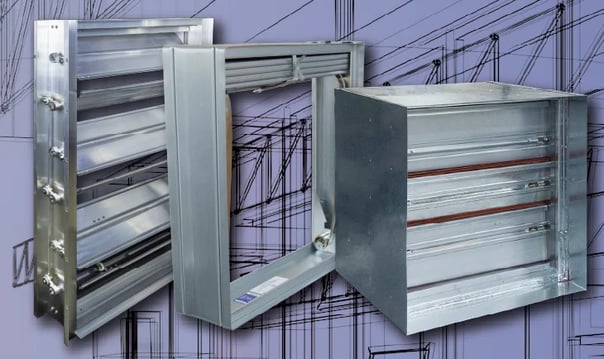
The application refers to the damper’s purpose in your HVAC system. It will also involve several other factors, such as the damper’s location in the system and the typical operating conditions of the system.
Start by asking the most important question: what do you need the damper to do? Will it direct airflow to other parts of the system? Will it regulate airflow through a particular section of duct? You would use a control damper for these applications. It’s important to know what each damper type does. Check out our article “Five Types of Dampers” for a quick guide to various damper types and their applications.
Know where each damper will be in your system. This will help narrow down your choice. For instance, you may have a section that uses spiral ductwork. You would like to use a round damper for this application. You will also want to review any special considerations for the application. Certain dampers may work better for the same task.
.jpg?width=550&height=444&name=Steel%20Damper%20-%20496%20-%20Multipanel%20with%20Jackshaft%20(Resize).jpg)
Let’s say you need a damper for moving exhaust air out of the building. You know that the exhaust will only flow out and that air shouldn't be able to pass back through. For this application, you can use a backdraft damper instead of a standard control damper. Backdraft dampers don’t require an actuator to rotate the blades, which saves you money, but they won’t work in situations where air flows in both directions.
You will also need to know a few things about the duct work or opening receiving the damper, such as maximum air velocity. Consult an engineer to determine these data points. It’s important to understand the damper’s application when making your decision.
2 - Know the Size

The next step will be to determine the size of each damper. You will need to know the size of the ductwork or opening to receive the damper. First, determine the damper's mounting location: over or inside the duct opening. This will involve the type of frame used by the damper, among other considerations. Our article on damper dimensioning can help.
The final size of the damper will either match the duct or be slightly smaller. When building dampers, manufacturers will often undercut the damper to accommodate both installation types and to account for thermal expansion. If the damper needs to be exact dimensions provided, then you will need to specify exact sizing with the manufacturer. Your dampers will need to fit wherever they go. Make sure each damper is the right size.
3 - Know the Damper
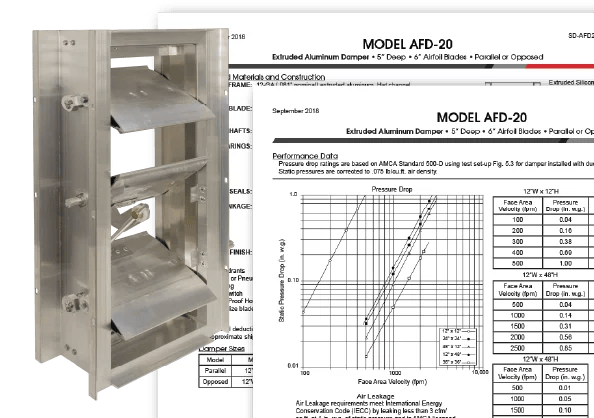
Will the damper perform the task? Learn more about the damper before finalizing your decision. To know the damper, check its submittal for performance data. For most dampers, you will look for air leakage and pressure drop. These two traits will affect the damper’s air performance, or its ability to pass air through its open blades.
Be sure to check for the AMCA rating seals printed on the submittal. Each rating seal verifies that an AMCA-approved laboratory conducted the tests under AMCA standards. An AMCA ratings seal means you can trust the data. A lower pressure drop means air will move more freely through the open damper.
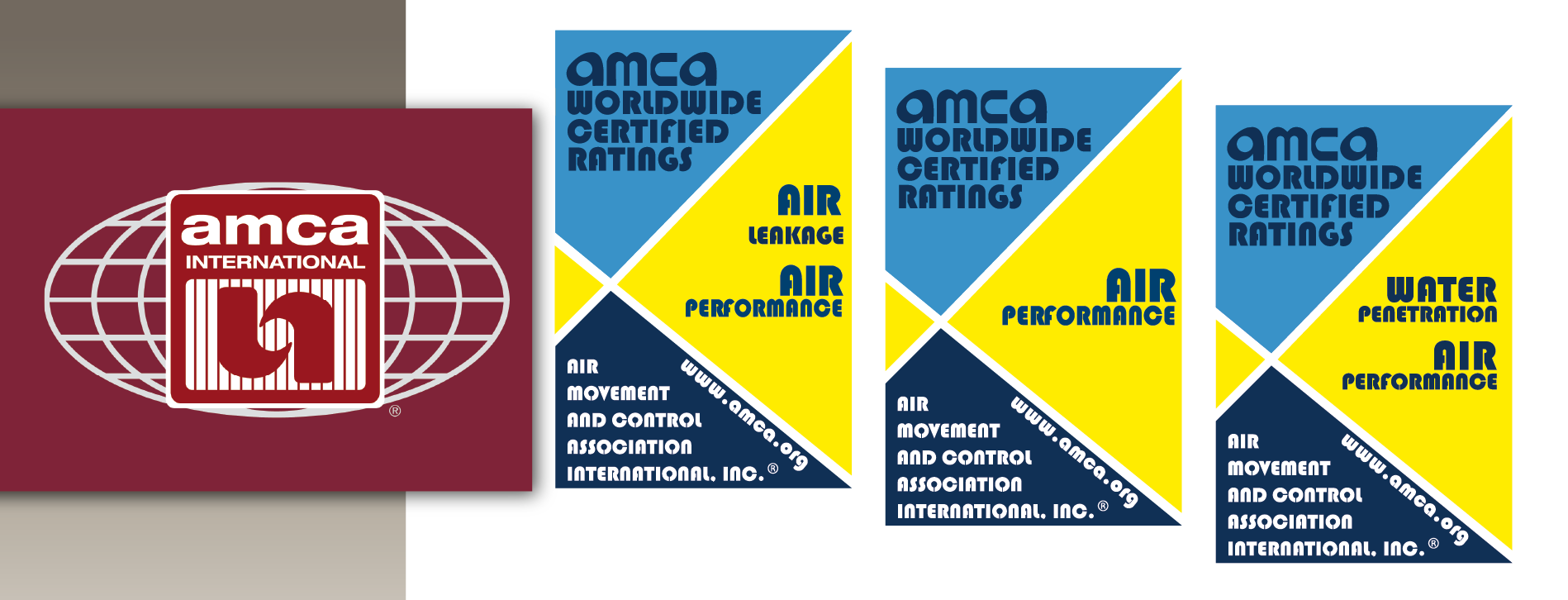
Pressure drop will change based on the damper’s size and on the velocity of air flowing through the damper. A smaller damper will have more pressure drop, because there will be less free area for the air to pass. Increasing air velocity will also increase pressure drop. Determine the maximum air velocity for the duct receiving the damper, then consult the pressure drop graph for the closest size.
Air leakage is also a crucial factor to consider. AMCA shows air leakage as a separate rating, but both ratings may appear on the same rating seal. A Leakage Class will accompany the air leakage rating. Class 1 and 1A allow the least amount of air leakage. The damper may have different class ratings at assorted sizes. Read this article for more information on air leakage.
Review the data and make sure the damper works for your application. By knowing your dampers, you will choose the best one for the task.
4 - Know the Options
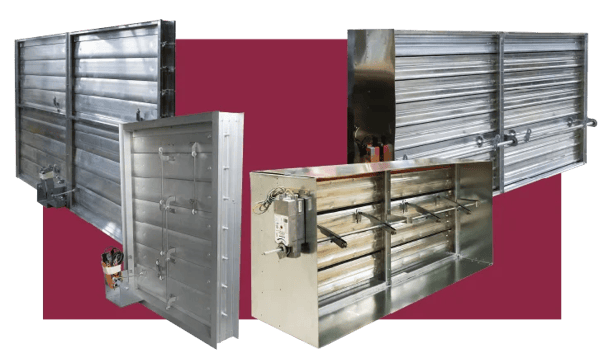
Every damper will have optional accessories that help the damper perform its task. Certain accessories, like actuators, are a simple decision for control dampers, but there may be aspects of the applications that you need to consider first.
There are three types of actuators, and which type you choose will depend on a few factors. Engineers commonly choose electric actuators to tie them to a central control system. However, electric actuators need power to operate and will require an electrician to help with the installation process. Pneumatic actuators have a cheaper initial cost than electric actuators, but they need a central air compressor to work.
If your damper is in an easily accessible location, then you can use the cheapest option, a manual actuator, to open and close it. Manual actuators need someone present to pull the handle. Each actuator type has its advantages. Determine which actuators will work best with your application.
.webp?width=1200&height=628&name=MCDLG%20-%20actuators%20(Resize).webp)
Other accessories, like jackshafts, will apply to specific damper types and specific builds. Jackshafts synchronize blade rotation between damper panels, so that they all open and close on the same action. Transition collars allow square and rectangular dampers to be installed in spiral ductwork, but they place the full damper inside the airstream. Counterweights can assist or resist the opening action of backdraft dampers. For a full explanation of the available options, check out our full article on accessories for control dampers.
Not all options will work with your damper. That’s why it’s important to understand your options and what they do.
5 - Know When They Arrive
The last thing you need to know is when to expect your dampers. Manufacturers provide lead time schedules for all their products. Be sure to review the lead times of the dampers when you order them. The exact lead times will differ between damper types. There may also be other factors involved that extend lead times, such as extra-large damper assemblies and dampers made from special materials.
Lead times will not include shipping time. Manufacturers will often provide rush programs to reduce lead times on certain products for an additional fee. Consult the manufacturer if you have questions.
.jpg?width=550&height=367&name=354%20-%20Multi-Zone%20Damper%20(Resize).jpg)
There is more to choosing the right damper than shopping through a catalog. You need to know what dampers you need, and what they can do for your project, for every application. Knowing your dampers is a crucial step in building an efficient HVAC system.
For more information on control dampers, check out these Newsstand articles:
.webp?width=91&height=70&name=MCDLG%20Logo%20(Resize).webp)
